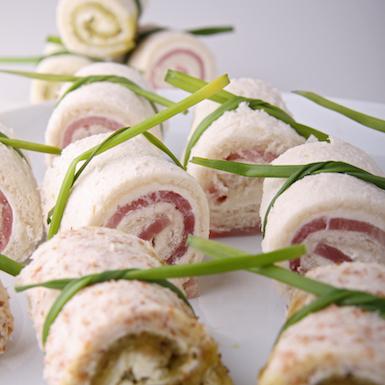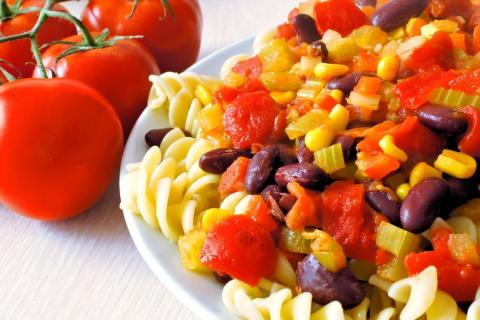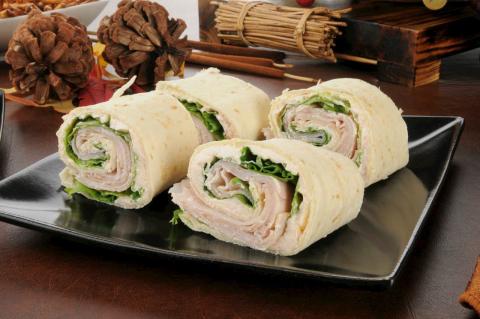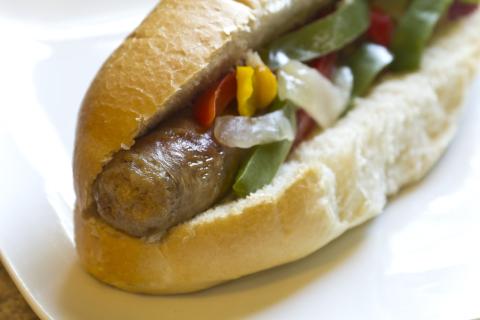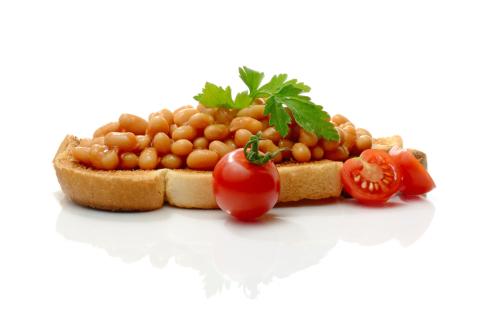- 1 Mug (300g) Rice
- 1 Tablespoon (10g) Vegetable Oil
- 6 (60g) Spring Onions
- 1 Medium Sized (160g) Red Pepper
- 10 Medium Sized (100g) Mushrooms
- 3 Tablespoons (90g) Frozen Peas
- 4 Tablespoons (40g) Sweet Chilli Sauce
Ingredients
Allergy Disclaimer
Always check the label of each ingredient for allergy warnings.
Method
- Cook rice as per manufacturer's instructions and rinse with boiling water.
- Meanwhile wash and trim tops and ends of the spring onions and chop finely. De-seed the pepper and dice, then wipe and slice the mushrooms.
- Heat oil in a large frying pan, fry spring onions for 2 -3 minutes and then add the pepper and mushrooms for a further 2-3 minutes.
- Add peas and the rice to the pan and stir continuously for 2-3 minutes then stir in the sweet chilli sauce.
- Serve when heated through.
Time Saver Tips
To save time, you could use microwavable or boil in the bag rice.
Cost Saver Tips
This is a great way to use any leftover rice and fresh or frozen vegetables you’ve got in. (Just remember to always let rice cool down before you put it in the fridge and only reheat it once.)
Tips for Kids
Your wee one will love helping you prepare and chop the vegetables – knowing they’ve been your little helper in the kitchen might even make them more likely to eat it! Swap in their favourite vegetables if that helps.
Nutritional Information
Based on a single serving of 305g (% of an adult's reference intake)
Energy
396 kcals ( 20 %)
1,575 kJ ( 20 %)
Fat
0.4 g ( 2 %)
Saturates
82.1 g ( %)
Sugar
8.5 g ( 9 %)
Salt
0.5 g ( 8 %)
Detailed nutritional information
| Per 100g | Per 305g serving | |
|---|---|---|
| Energy Kcals | 127 | 396 |
| Energy Kj | 539 | 1,575 |
| Protein | 2.8 g | 8.2 g |
| Total Fat | g | g |
| Saturated Fat | 0.1 g | 0.4 g |
| Carbohydrates | 27.7 g | 82.1 g |
| Total Sugars | 2.9 g | 8.5 g |
| NSP Fibre | 0.8 g | 2.4 g |
| Sodium | 64 mg | 190 mg |
| Salt | 0.2 g | 0.5 g |
Find out about nutritional labelling
Nutrition labels on the front of packaging
- Most of the big supermarkets and many food manufacturers display nutritional information on the front of pre-packed food.
- Front of pack nutrition labels provide information on the number of grams of fat, saturated fat, sugars and salt and the amount of energy (in kJ and kcal) in a serving or portion of a recipe.
- The labels also include information about reference intakes (expressed as a percentage) which are guidelines about the approximate amount of particular nutrients and energy required for a healthy diet.
- The colour coding tells you at a glance if the food has high (red), medium (amber) or low (green) amounts of fat, saturated fat, sugars and salt.
- The more greens on the label, the healthier the choice
- Amber means neither high nor low, so you can eat foods with all or mostly ambers on the label most of the time.
- Reds on the label means the food is high in that nutrient and these are the foods we should cut down on. Try to eat these foods less often and in small amounts.
Food shopping tips
If you’re trying to decide which product to choose, check to see if there's a nutrition label on the front of the pack. This will help you to quickly assess how your choices stack up. You will often find a mixture of red, amber and green colour coding for the nutrients. So when you're choosing between similar products, try to go for more greens and ambers and fewer reds if you want to make a healthier choice.
 Activities & Play
Activities & Play Behaviour
Behaviour Childcare
Childcare Development & Growing Up
Development & Growing Up Family, Friends & Relationships
Family, Friends & Relationships Feeding Your Baby
Feeding Your Baby Food & Eating
Food & Eating Health & Safety
Health & Safety Mental Health & Wellbeing
Mental Health & Wellbeing Money & Work
Money & Work Online Behaviour & Safety
Online Behaviour & Safety Pregnancy & First Days
Pregnancy & First Days School & Education
School & Education Sleep
Sleep


















